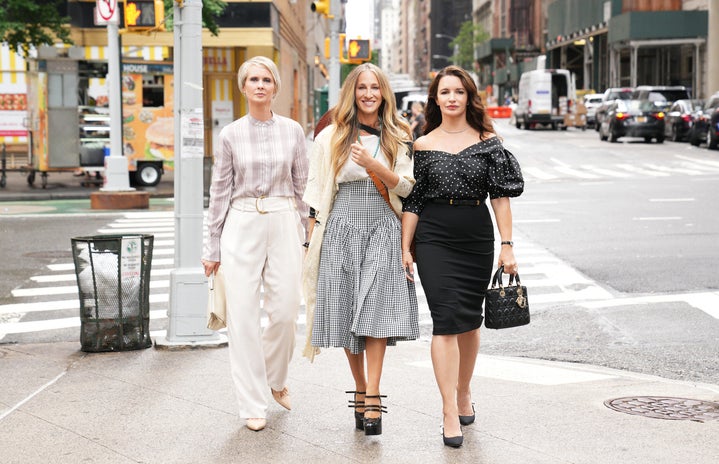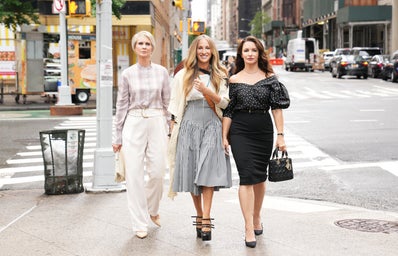Every year as soon as the first day of October hits, my brain goes into cozy mode. All I want to do is curl up under a blanket on the couch with a cup of chamomile tea in my hand and re-watch all my favorite shows. That’s what I’m doing now. At the moment, I have been binge-watching “Sex and the City.” For those of you who have not watched the show, it’s about a shoe-obsessed freelance writer living in Manhattan; she’s single, fabulous and thirty-something, living her best life with her closest friends. Carrie Bradshaw, the main character, has been idolized for her fashion sense and is considered the archetype for the modern woman.
Don’t get me wrong, Carrie is fantastic, with her curly hair and boldness, but her best friend, Samantha, carries the whole show. Samantha is headstrong and never settles for anything less than what she deserves. She gets what she wants and she does whatever it takes to get it. However, unlike Carrie, Samantha has a more lax approach to sexuality. Once, she called herself a try-sexual, a try anything once person. It is her openness with her sex life that makes me enjoy her character so much. She teaches women that it’s OK to “live like a man,” and that at the end of the day, we should all be comfortable doing whatever makes us feel best.
Carrie, on the other hand, often looks at things with a more conservative, traditional lens. In fact, in one episode she says that she doesn’t believe that bisexuals are even real; that bisexuality is just a pit stop on your way to being “fully” gay. Though I must applaud Carrie for constantly voicing her opinions and never backing down, there is a reason conventional ways of thinking are becoming a thing of the past.
Carrie looks like a feminist and talks like a feminist — sometimes — but sadly she is just promoting misogynistic propaganda. While on the surface it seems like Carrie is an independent, free-willed woman, behind her well-plucked eyebrows and blushed cheeks lies a woman waiting to be swept off her feet and rescued by a rich man. This ideology is very damaging to the minds of young women everywhere; we should not be taught that we need a man to come in and save us. We are fully capable of having happy, successful lives without the help of men.
Samantha, though her character is a high-strung man-eater, she is the symbol of independence. From the beginning, Samantha has always known what she wanted and she always knew how to get it. She’s an upper-class PR representative with a hunger for power. Samantha Jones is continually working to better herself, whether it’s making more money, getting a better apartment or creating a new string of networks.
In the show, she aimlessly runs through men because she is “not the relationship type.” However, they have made her character a man-eater because women in power terrify men. In 2000, gender roles were still very prominent. Men wanted someone they could take care of, someone that had to rely on them. They didn’t want someone who made two times their yearly salary in a month, and they sure as heck didn’t want someone who walked their path. Samantha Jones was her own man.


